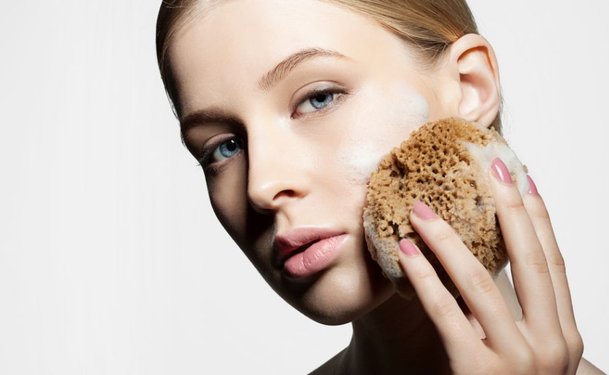Ingrown hair scars are common in those areas of the body where hairs are removed frequently. Such scars are also found in those body areas with coarse and thick hair. Hence, you can find ingrown hair scars on the face (beard), neck, armpits, legs and pubic regions. This ingrown hair occurs as a result of curling back of the hair tip, i.e., the hair grows into the skin.
Although it is not a serious condition, ingrown hairs can lead to tanning or the formation of scars in the affected areas. Ingrown hairs can appear like red or pink bumps in the affected regions. There are many ways to remove such ingrown hair scars, and here are 8 of them:
1. Creams
There are anti-ingrown hair scar creams and lotions that act gently on the affected skin and remove the scars in few days. They are generally alcohol free and pH balanced, and can moisten the irritated skin without making it greasy.
2. Exfoliation
Though scars cannot be completely removed by exfoliation, it can help in reducing the prominence of scars by fading them. Loofah scrub or lemon juice can be used on a regular basis to remove the ingrown hair scars safely at home, without worrying about the side effects.
3. Cocoa Butter
Cocoa butter or cacao butter extracted from cacao seeds is an excellent skin moisturizer, and hence it is used for the reduction of scars and rashes on the skin. This cocoa butter has CMP (cocoa mass polyphenol), which can inhibit the IgE immunoglobulin. (IgE immunoglobulin is responsible for aggravating the scarring symptoms.)
4. Laser Treatment
Pulsed Dye Laser can be used to remove the scars caused by the ingrown hair, as it is hypertrophic in nature. This method gives satisfactory results with minimum side effects, as only the hyper-pigmented areas of the scars can be treated with laser.
5. Microdermabrasion
It is a less painful cosmetic procedure where abrasive crystals like zinc oxide or aluminium oxide are used for removing scars. As ingrown hair scars are raised scars, they can be effectively removed by means of this method.
6. Bleaching
After consulting a dermatologist, you can try using mild bleaching cream in the scarred areas, as these creams will make the scars less conspicuous by lightening the skin of that area.
7. Chemical Peels
As these scars are raised, chemical peels may also help in their removal. The type of peel (mild, medium or deep) has to be decided depending on the severity of the scars. Although the acids in these peels burn off the outer skin layers, after peeling, new scar-free skin is formed.
8. Silicone Gels
Silicone gel is effective in reducing the scars and it can be used in the form of ointment for topical application, or as sheets.
Using any over-the-counter products for removing these scars is not advisable. Harmful chemical ingredients might be present in such products, which can worsen the situation or trigger an allergic reaction. Hence, it is wise to consult your dermatologist before trying out any methods of scar removal.



